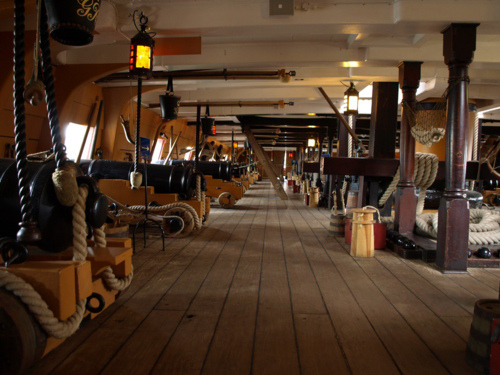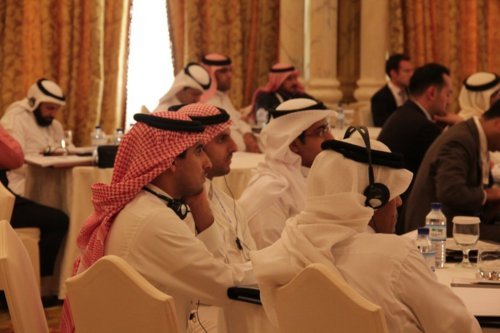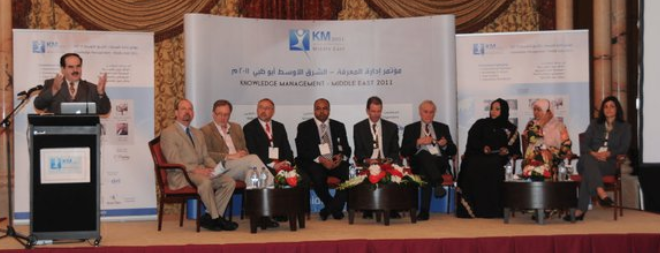KMUK 10 was held concurrently with the FIFA World Cup. At that time a lot of debate was going on about the abject performance of the English football team (twas ever thus). Looking back now it was clear old ways of presenting information were becoming stale.
If Emile Heskey is the answer, are we asking the right question?
The depressing performance by the English team at the South African World Cup illustrates the old adage that knowledge out of context is just information. Despite both teams possessing the latest analytical technology, a more astute German team executed their tactical plan perfectly and embarrassed England. And historical contexts are important here; a non-goal scorer remains a non-goal scorer and is therefore unlikely to change the course of a game when coming on as a substitute.
KMUK 2010
A couple of weeks ago I had the pleasure of chairing the annual 2 day UK knowledge management event (kmuk http://kcuk.wordpress.com/) held this year in Canary Wharf London. In addition to 120 or so senior practitioners the speakers were drawn from across the globe; an interesting mix of people who’ve done stuff and are moving onto pastures new, those who are prominent advocates, those at the forefront of new thinking and of course Dave Snowden the recipient of a science in km award who fits at least three of the above and can be relied upon to give a provocative address.
It is a few years (in fact a decade) since Sparknow was a disruptive force at the sister event in Brussels, constructing a garden shed (‘scriptorium’ – a slightly quirky neutral space where delegates could retire to for reflection about the need to cultivate and propagate) among the many software vendors’ exhibits that were the backdrop to the conference. Today such vendors are conspicuous by their absence; perhaps Autonomy’s increasing ownership of the business enterprise search space has forced those that remain in business to explore new horizons?
I was looking for evidence of a new disruptive force and for signs of life among the km community. Did I find it? There were a couple of global km programmes showcased, Heineken, Sanofi Pasteur being two. The majority focused on specific solutions. People such as Bonnie Cheuk have made a virtue out of the necessity of identifying a business problem and then illustrating how km tools and techniques can help solve it. The example presented demonstrated how to use social media to help develop a new strategy. BAE Systems and Burges Salmon (law firm with big Bristol presence) have used an Autonomy based system to help them provide their internal clients with insights and what they described as best practice.
A lot of what was presented was illustrations of good professionalism. The absence of solid metrics was bemoaned (as it always is); people who measure tend to rely on surveys.
lightening bolt: Using stories to present issues
Was there a lightening bolt? If I’m honest the disruptive force / lightening bolt would seem to be increased use of narrative and story. The challenge; how to honour the original voice in an environment where sound bites and 24×7 headlines drive the attention span of audiences?
One presenter (Helen) chose to be bold. She read out three stories and invited the audience to discuss each one. They focused on how a centrally driven change management effort was being received. There was an audible buzz; the delegates had listened and had differing emotions. The language and way of presentation had struck a chord and the delegate’s feedback reflected this:
- A very illuminating session on the power of micro-narratives; how much you can learn from a short story. Good to have opportunity to discuss, rather than just being another ‘lecture’.
- Very participative, and found it useful to engage in discussion around the stories.
- Great to take this approach as contrast to presentations. Supports reflection and some slower learning.
illustrating the value (and effort) of story work
Helen is now grappling with the outputs of this exercise and since this is a common issue I thought I’d play back something one of our clients said about an assignment Sparknow worked on with them on a couple of years back:
- One of our strongest impressions… was the absolutely meticulous attention to detail. I think this is both a good and bad thing – it leads to a fantastic product every time but at a very high resource cost from those working on the project. One thing I particularly noticed being so closely involved in the narrative research project was how important that attention to detail was in ensuring the right questions were asked of customers to bring out the stories – I had absolute confidence in the project right through the process.
- The method generates extremely deep insight and the stories have proved extremely powerful both in and out of the Boardroom. It has been interesting watching people react to the stories – they can make people very uncomfortable or react quite strongly. The interesting thing is that they don’t allow people to ‘hide’ from the truth and therefore the impact of just the .stories collected is long lasting, as well as the insights generated.
- Story work seems to be resource intensive (probably associated with the meticulousness of what was done) so it is something you have to pick and choose carefully where you use it – not only in terms of spending the money but also in terms of the impact that can be created with particular sets of stories. * The audio material is still being used to this day so there is quite a legacy!
an alternative summary: ‘Good wrap-up and collation of key points from sessions.’
As a departure from the usual Chairman’s Summary session Christopher Heimann and I invited each participant to share with his or her partner whatever they wanted to as takeaways. We stressed this was not a conversation more an exercise in listening and being heard. We asked the pair to repeat this process with the other partner acting as teller and vice versa.
Based on a technique we’d used in Darfur it illustrated how valuable (and in a pressure situation, cathartic) it can be to tell and hear your story played back at the end of a tiring day. It surfaced many previously unspoken issues and being unexpected shifted thinking, two of the many virtues of a narrative approach.




